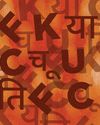يحاول ذهب - حر
WAY OF THE DRAGON
January 08, 2023
|THE WEEK India
China’s latest provocation in the Arunachal frontier has serious implications

IN CHINESE FOLKLORE, the mythical dragon represents strength, nobility of intention and good luck. As China’s most recognisable emblem from the Qing dynasty (1636-1912), the dragon has negative attributes, too—arrogance and impatience.
India has been witnessing the dragon’s negative qualities of late. Arrogance, however, could signal the beginning of the end, and impatience breeds costly mistakes. That could well be the story of China’s perceptible shift in focus from eastern Ladakh in the west to Arunachal Pradesh in the east.
Bilateral ties have been deteriorating since May 5, 2020, when a border squabble on the northern bank of Pangong Lake in eastern Ladakh sparked off a fistfight between the two sides. Hostilities peaked on June 15, 2020, when 20 Indian soldiers died in a hand-to-hand night combat with the Chinese army in the cold and treacherous Galwan Valley. China reported four dead.
Two harsh winters have since passed, and a third is under way. Seventeen rounds of military commander-level talks have taken place. Both sides have agreed to a buffer zone at many points of dispute.
This has had the effect of ‘fixing’ the blurry border while blocking off Indian troops from areas that they could earlier patrol. Tricky issues such as settling the Depsang and the Demchok border were being addressed when news of fresh trouble broke on December 11, 2022. Another bout of border fisticuffs had taken place two days earlier. Many troopers were injured on the high-altitude Yangtse ridge in Arunachal Pradesh’s Tawang sector.
هذه القصة من طبعة January 08, 2023 من THE WEEK India.
اشترك في Magzter GOLD للوصول إلى آلاف القصص المتميزة المنسقة، وأكثر من 9000 مجلة وصحيفة.
هل أنت مشترك بالفعل؟ تسجيل الدخول
المزيد من القصص من THE WEEK India

THE WEEK India
Trump and the C word
Dr Christine Fair, a prominent American political scientist and Georgetown University professor specialising in South Asian security and counter-terrorism, recently called President Donald Trump a ch***ya-several times-during an interview with Pakistani-origin British journalist Moeed Pirzada, a man who himself is no stranger to the word on air.
2 mins
September 07, 2025

THE WEEK India
India will have its own space station by 2035
DR JITENDRA SINGH, Union minister of state, science and technology
4 mins
September 07, 2025

THE WEEK India
BEST EXERCISE TO FIGHT INSOMNIA
New research published in BMJ Evidence-Based Medicine suggests that yoga, Tai Chi, walking and jogging may be the most effective forms of exercise for improving sleep quality and easing symptoms of insomnia. Insomnia affects about 22 per cent of adults and is associated with an increased risk of numerous mental and physical health conditions, including dementia and cardiovascular disease.
7 mins
September 07, 2025

THE WEEK India
Space to grow
From designing satellites to starting space companies, young Indians have joined the space revolution
4 mins
September 07, 2025

THE WEEK India
ALL BETS ARE OFF
The ban on real-money gaming apps has forced companies to pivot
6 mins
September 07, 2025

THE WEEK India
Home is where the art is
Taba Chake had to leave Arunachal Pradesh to find success, but through his music, he takes a piece of home wherever he goes
4 mins
September 07, 2025

THE WEEK India
A future pregnant with promise
Chinese researchers have announced that they are developing a humanoid robot with an artificial womb designed to replicate the entire process of human pregnancy—from conception to birth. Led by Dr Zhang Qifeng of Kaiwa Technology, the project was unveiled at the 2025 World Robot Conference in Beijing. The artificial womb, filled with synthetic amniotic fluid and connected to a nutrient delivery system, is intended to support foetal growth through a full-term gestation. A prototype is expected by 2026, with an estimated cost of about 1,00,000 yuan (around ₹12 lakh).
2 mins
September 07, 2025

THE WEEK India
The problem with being too rich
Norway has a new complaint. It's too rich. Economist Martin Bech Holte titled his cautionary bestseller: The Country That Became Too Rich. On book tours across the nation, he has been warning citizens about the side-effects of oil wealth. With a per capita GDP of ₹87 lakh ($100,000), Norway is richer than the US, China, Japan, Britain, France and other developed nations. Besides, in theory, the per capita share in its booming $2 trillion oil fund, the world's largest sovereign wealth fund, is an additional ₹3 crore.
2 mins
September 07, 2025

THE WEEK India
THE STORM RIDER
ARUNDHATI ROY, IN HER LATEST BOOK, BRINGS OUT THE MANY SHADES OF HER MOTHER—HER COURAGE AND HER COQUETRY, HER WARMTH AND HER VENOM. AFTER ALL, SHE WRITES, SHE IS CONSTRUCTED FROM THE DEBRIS OF HER MOTHER'S FURY
11 mins
September 07, 2025

THE WEEK India
The taboo tax
India's abortion laws recognise a woman's right to choose, but stigma and inflated costs often make that choice hard
5 mins
September 07, 2025
Translate
Change font size
